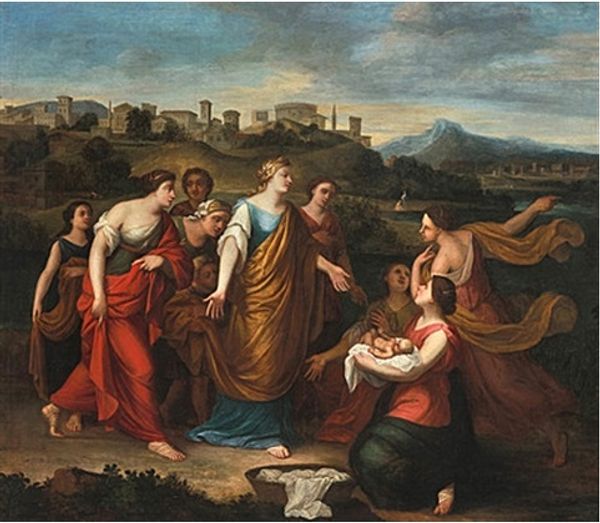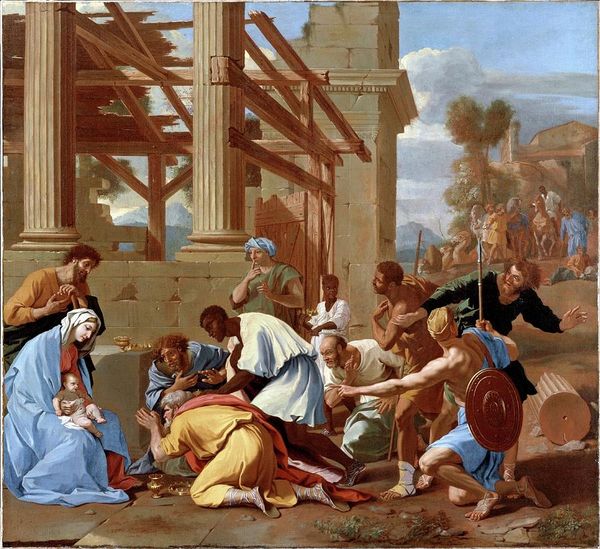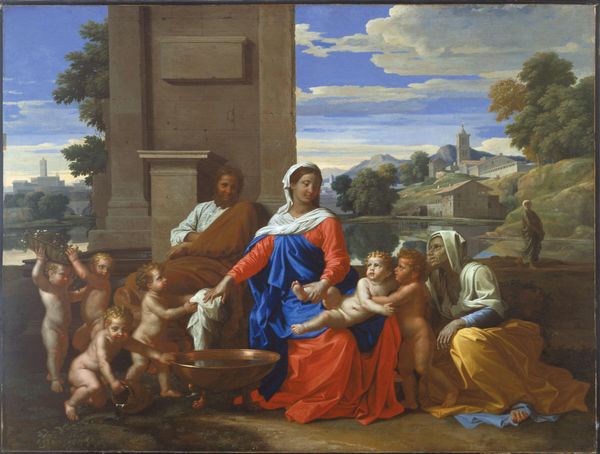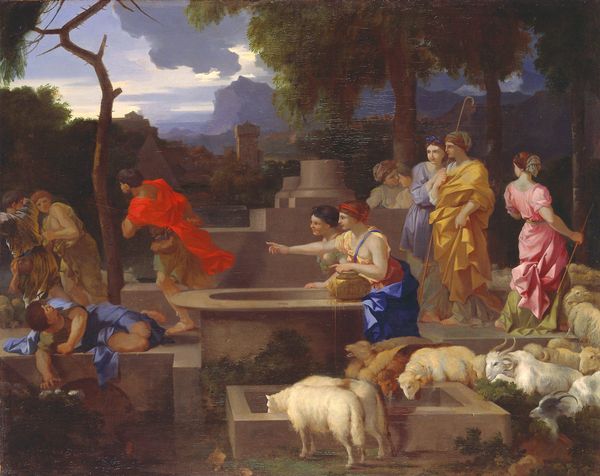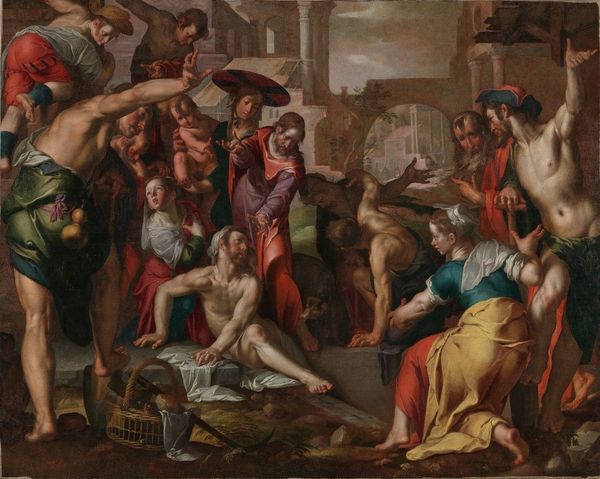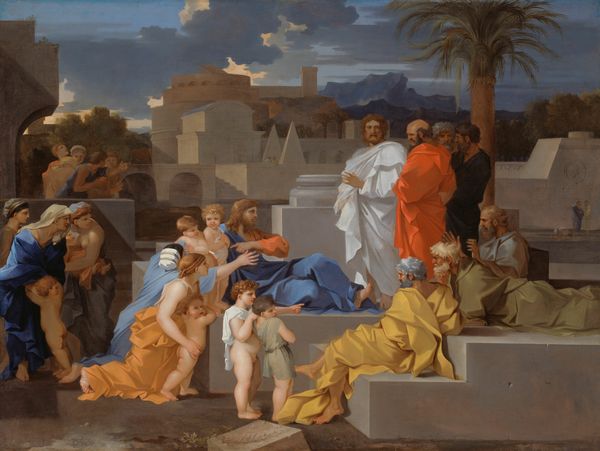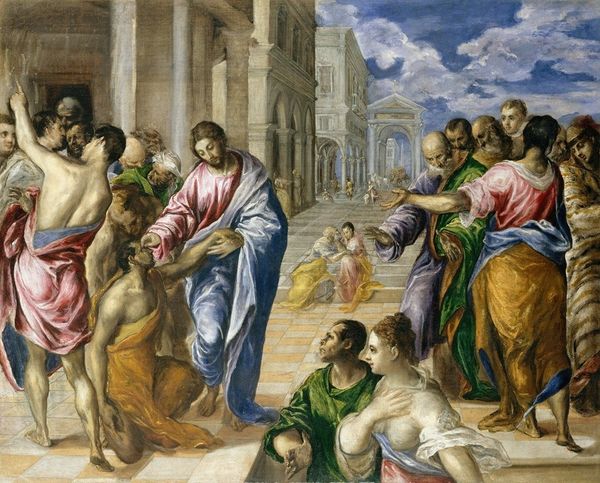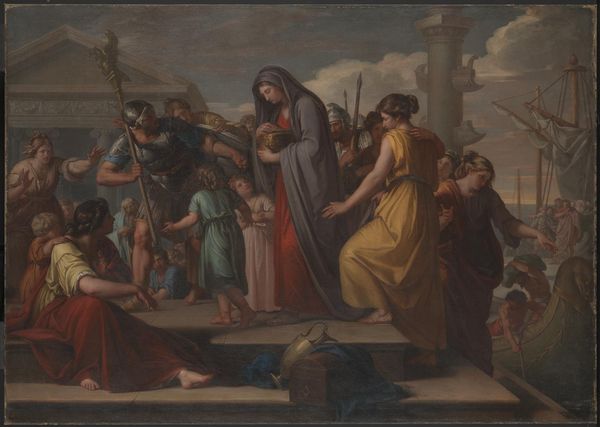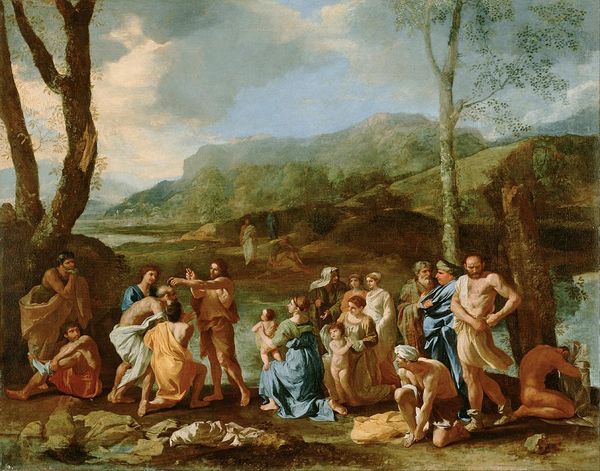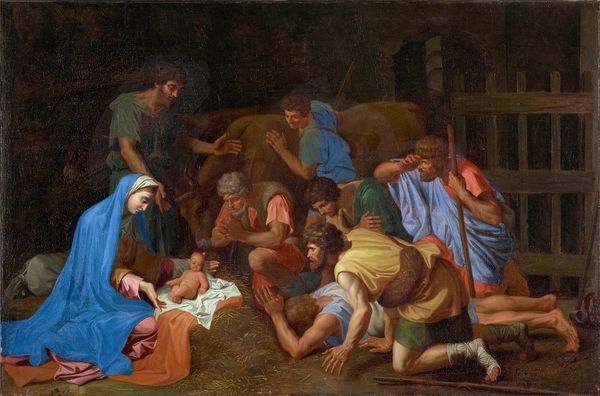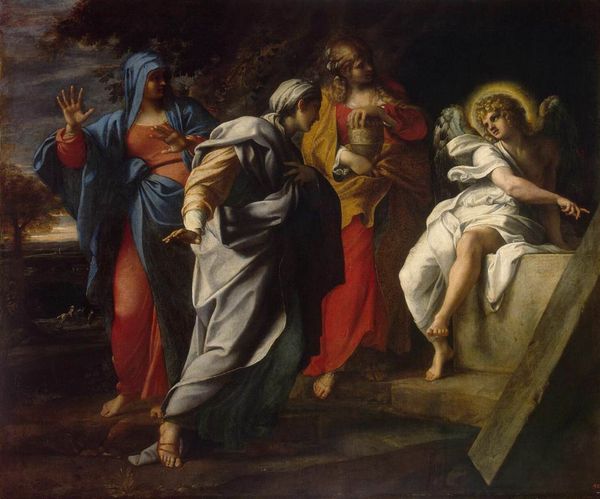
painting, oil-paint
#
baroque
#
painting
#
oil-paint
#
landscape
#
figuration
#
oil painting
#
christianity
#
history-painting
#
academic-art
Dimensions: 116 x 178 cm
Copyright: Public domain
Curator: Nicolas Poussin's "The Finding of Moses," painted in 1651, presents a fascinating interpretation of the biblical story using oil on canvas. It currently resides at the National Gallery in London. Editor: Oh, what a surprisingly gentle scene! The way everyone leans in, almost protectively… you can practically feel the hush of discovery rippling across the canvas. Curator: Indeed. Poussin masterfully structures the composition, creating distinct planes to emphasize the narrative's unfolding drama. Observe how the figures are meticulously arranged, drawing our gaze to the central group cradling the infant Moses. This exemplifies Poussin’s academic approach, doesn’t it? Editor: Mmm, absolutely! But what grabs me are the secondary figures lounging almost casually along the water’s edge. They’re present yet strangely removed, adding a wonderful layer of quiet contemplation to the chaos of the main event. Almost as if they have to pretend to be oblivious so they won’t betray Moses. Curator: Note also the classical architecture subtly placed in the backdrop. Poussin strategically contrasts these structured forms with the naturalistic landscape. This duality highlights the integration of human civilization and divine intervention within the biblical narrative. He certainly emphasizes clarity of design here! Editor: Exactly. Even the light feels designed, you know? It highlights the central figures, practically spotlighting their gestures and drawing us deeper into the narrative. It also emphasizes the beauty of the verdant scenery, so even without any people I feel the story. Curator: Poussin's choice of a subdued yet rich palette contributes to the overall harmony. Colors are deliberately employed to guide our attention. Blues and golds serve as symbolic signifiers, echoing the nobility and destiny intertwined within Moses' story. It’s more than just surface level aesthetic, obviously! Editor: I agree, it all feels meticulously… planned. I’m left with this strange sense of hopeful serenity… almost like Poussin whispers that even amidst chaos, salvation—a new chapter—can always be found cradled in the most unexpected of places. It also says a lot that the artist portrayed the Egyptian women here to seem graceful and almost noble, which emphasizes how they took care of baby Moses and respected him. Curator: An insightful note indeed. Poussin presents a narrative deeply imbued with symbolism and structured through careful visual organization. It exemplifies Baroque landscape. Editor: And for me, it remains a gorgeous reminder of finding peace and new beginnings in unexpected moments, and of a universal value such as the appreciation of life.
Comments
No comments
Be the first to comment and join the conversation on the ultimate creative platform.

